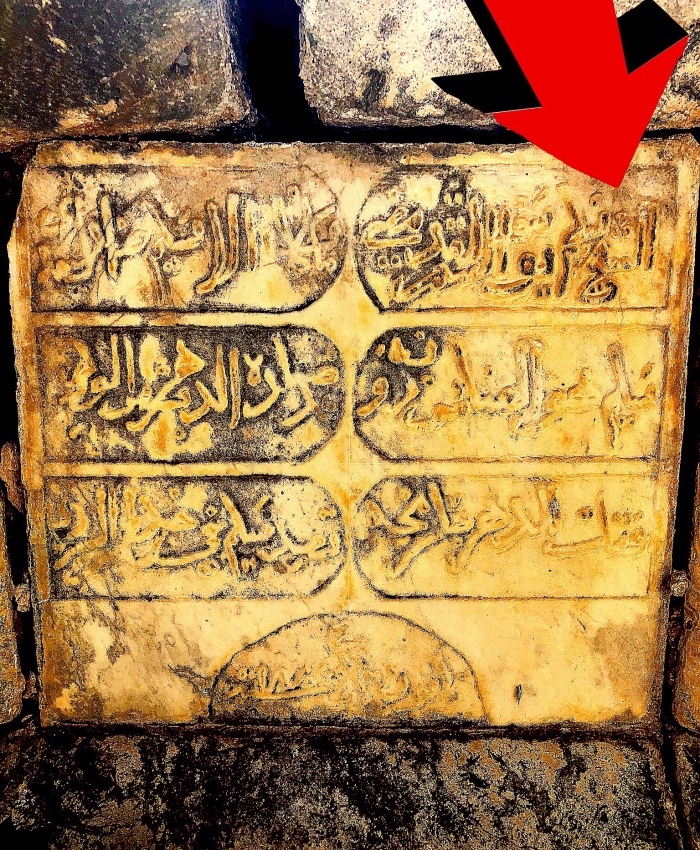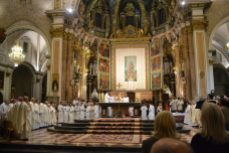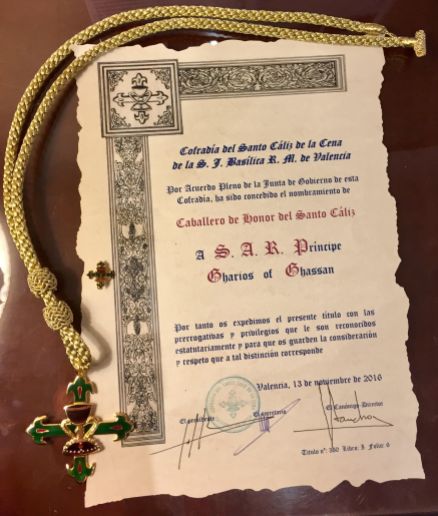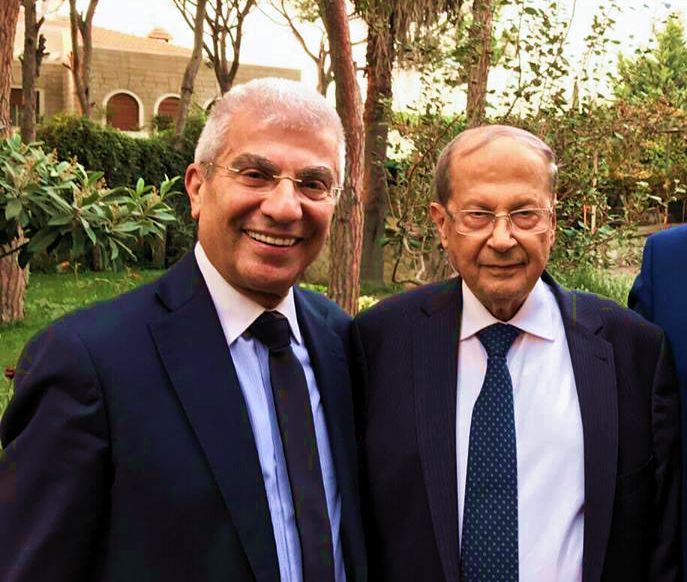
The Royal Family of Ghassan, after the advent of the Islamic conquest and the fall of the first Ghassanid State (220-636 CE), moved to the domains of the Byzantine Empire and safe Christian places like the area of today’s Lebanon.That’s attested by several known sources:
“After the disappearance of the Ghassanid state, isolated Ghassanian Princes continued to reign in some oases and castles, along with Salihids and some other phylae.” Bowesock/Brown/Grabar “Late Antiquity” –, Harvard University Press, 1999, p. 469
It’s also known that after the fall of the aforementioned first State, the Byzantine Empire recognized the Ghassanid Royal Family‘s status of what’s known today as “Government-in-exile”.
“Heraclius [Byzantine Emperor] received him [King Jabalh Abu Chemor] with honour and bestowed upon him estates and palaces.” (Professor Yasmine Zahran, “Ghassan Resurrected”, Stacey International2006, p. 13)
Certainly, the most noteworthy of those Ghassanid reigns after Islam was the Byzatine Empire in the 9th Century CE.
“Although little is known of Jabala’s activities after his emigration to Anatolia, his place in the history of the Ghassanids in the Middle Byzantine period is important, since it was he who established a strong Ghassanid presence in Byzantine Anatolia, one which lasted for many centuries. The climax of this presence was the elevation of one of his descendants to the purple and his establishment of a short-lived dynasty which might be described as the House of Nicephorus.” “Ghassan post Ghassan” by Prof. Irfan Shahid, Festschrift “The Islamic World – From classical to modern times”, for Bernard Lewis, Darwin Press l989, pg. 325
“Nicephorus (A.D. 802-11) was a descendant of the Ghassanid [King] Jabala [Abu Chemor].” (Ibid.)
This assertion was even stronger not merely citing the King Jabala as ancestor, but the eponym of the Royal Ghassanid Dynasty using the name of King Jafna, the founder of the Ghassanid Kingdom. Therefore, we can conclude that Emperor Nicephorus (or Nikephoros) was not only citing his ascendancy but by using the term “Jafna” he was claiming to be the head of the Ghassanid Dynasty.
“…This valuable information comes from Tabari; see Tarik (Cairo, 1966), VIII, 307, when he speaks of [King] Jafna, the eponym of the Ghassanids, rather than [King] Jabala.” (Ibid. pg.334)
Since there’s a lack of English references and sources about the 500 years reign (1211-1747 CE) of descendants of King Jabla Abu Chemor in today’s Lebanon, the Royal House of Ghassan has commissioned an English sworn legal translation of sensitive excerpts of the 1948’s official Historical Scientific Research made by a famous Maronite historian, Ignatious Tannos El-Khoury and recognized by the Lebanese Republic until the present date.
Important to note that there are only 2 (two) ancestral families/tribes in the Middle East with the name “Chemor” or “Shummar” or “Shammar” (all are different transliterations to the Arabic word for the plant “Fennel“). One, is a Bedouin Muslim tribe originally named “Tayy” that started to adopt the name “Shammar” or “Shammari” only after the XIV century. The one in Lebanon was originated from the Ghassanid Royal Family since the last king of the first State was known as “Jabla Abu Chemor“. It’s documented that this family uses the name “Chemor” at least since 1211 CE, almost two centuries before the Tayys.
Here download the .PDF English Legal Translation
Here download the .PDF full book in Arabic
Here, read about the recent validation of the book by a leading Maronite historian
As previously mentioned, the Lebanese Republic recognizes the El Chemor family and its heritage. Some of the Lebanese family members kept their titles on their passports from the times of the Ottoman Empire until the Lebanese passports today. That can also be attested by this 2014’s article from the Lebanese Ministry of Information where the family is cited with the recognized titles and also the 1948’s Historical Scientific Research is mentioned and validated.
Official 2014’s article from the Lebanese Ministry of Information

Photo: The grave of His Highness Sheikh Selim El Chemor (passed away 1909 CE, the great grandfather of HRH Prince Sheikh Selim El Chemor, honorary head of the Royal House of Ghassan), note that the royal title of Sheikh (in Arabic, upper right side) is on his tombstone, a capital proof that the family has been publicly using the ‘sui iuris’ titles for centuries until the present date. (Grave at the cemetery at the Mar Mama Ancient Church in Kferhata, Lebanon) Understand the legality of the titles here:














